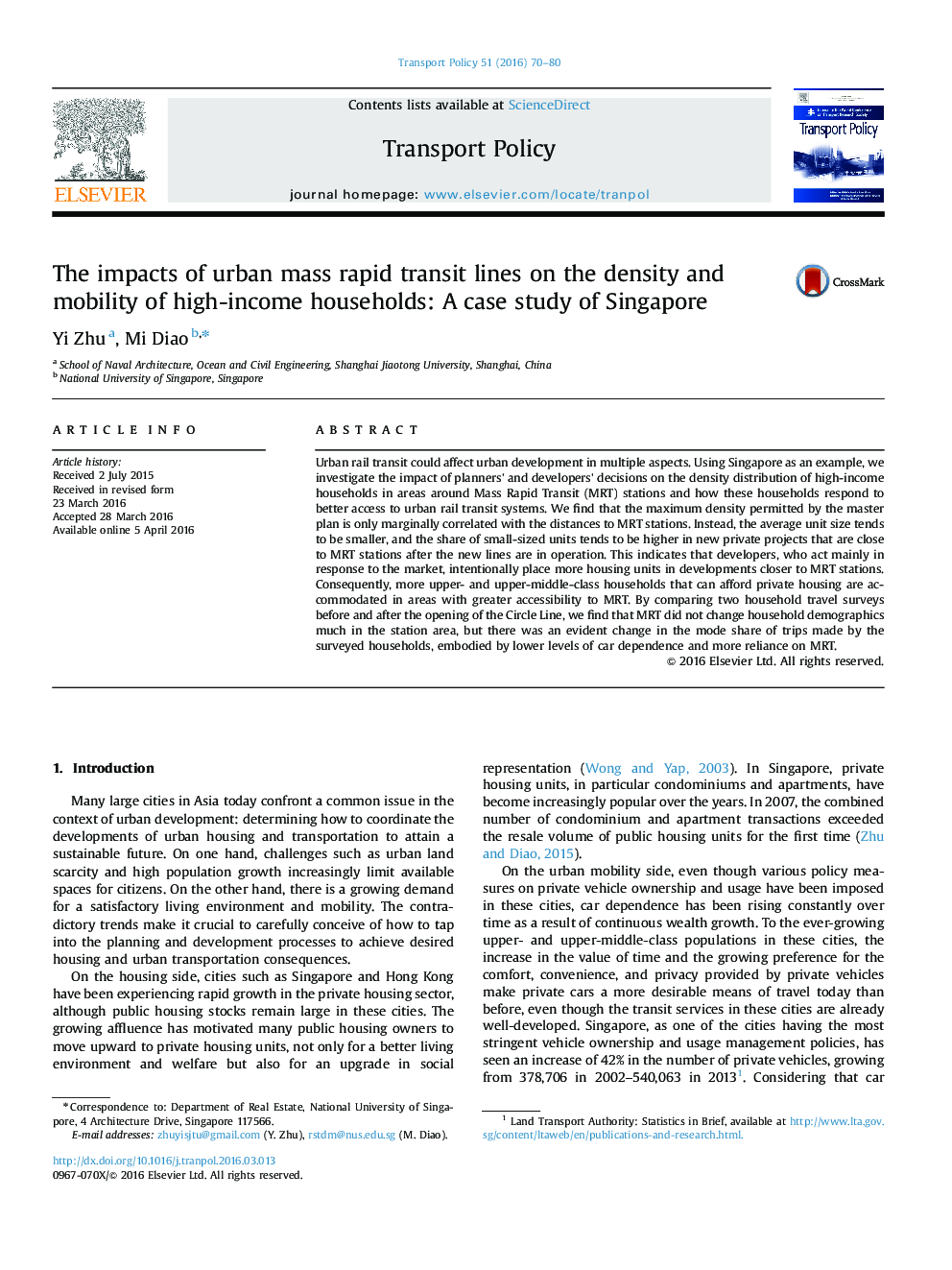| Article ID | Journal | Published Year | Pages | File Type |
|---|---|---|---|---|
| 5119187 | Transport Policy | 2016 | 11 Pages |
â¢We use a DID estimator to assess the impact of MRT on wealthy households.â¢New MRT stations increase the density of wealthy households in the vicinity.â¢Access to MRT reduces the levels of car dependence in wealthy households.
Urban rail transit could affect urban development in multiple aspects. Using Singapore as an example, we investigate the impact of planners' and developers' decisions on the density distribution of high-income households in areas around Mass Rapid Transit (MRT) stations and how these households respond to better access to urban rail transit systems. We find that the maximum density permitted by the master plan is only marginally correlated with the distances to MRT stations. Instead, the average unit size tends to be smaller, and the share of small-sized units tends to be higher in new private projects that are close to MRT stations after the new lines are in operation. This indicates that developers, who act mainly in response to the market, intentionally place more housing units in developments closer to MRT stations. Consequently, more upper- and upper-middle-class households that can afford private housing are accommodated in areas with greater accessibility to MRT. By comparing two household travel surveys before and after the opening of the Circle Line, we find that MRT did not change household demographics much in the station area, but there was an evident change in the mode share of trips made by the surveyed households, embodied by lower levels of car dependence and more reliance on MRT.
